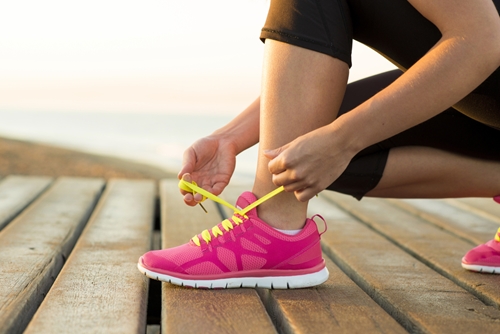
7 of the most common running mistakes

Running isn’t just a great way to burn calories and get stronger muscles, it can also be a form of stress relief and help to boost your mood thanks to feel-good endorphins. But if you’re a new runner, there are a few mistakes you may be making that could take away from your workout and cause potential injury. Get the most out of home treadmills by avoiding these fitness blunders:
1. Doing more than you’re ready for
Ambition is so important when you’re exercising because it fuels you to accomplish your goals. However, doing too much, too soon can raise your risk for potential injury. Your body may not be used to running long distances or doing sprints, so it’s best to work your way up to a high-intensity running workout. Start with a five minute warmup of walking or jogging, and then start your running regimen. Try increasing your mileage by no more than 10 percent each week.
2. Not giving yourself a break
If you left your car on for a week straight, it’s going to eventually run out of juice. The same concept applies to you and your workout schedule. It’s important to be consistent and keep up your running routine, but your body needs a day or two to recover. Overuse of your muscles can lead to injury. High-intensity running can be tough on the body, especially if you’re a new runner. Take about two or three days per week off to give yourself some much-needed (and much-deserved) recovery time.
3. Being tense while running
Allow your upper body to relax when you’re running on your home treadmill. When your body position isn’t tense, you put less strain on your muscles and joints. Plus, remaining tense while running can be exhausting! Ensure that you have enough energy to run throughout the duration of your workout by dropping your shoulders into a relaxed position and keeping your elbows at 90 degrees. It’s always better to concentrate on your form than your speed or intensity.
4. Wearing old workout shoes
Running with outdated workout shoes won’t give you the support you need while running. Typically, you can expect to get about 400 miles out of a pair of shoes. After that, you should definitely think about replacing them. Visit your local running store and ask an employee to size you for a shoe.
5. Running on concrete
Running on concrete won’t be doing your joints any favors. The surface is not forgiving, putting strain on your joints with each step you take. Instead, protect your joints by running on the TRUE M50 Treadmill. This machine protects your knees, ankles and hips by providing an orthopedic belt that gives you a more comfortable stride and takes the impact off of your joints.
6. Not refueling right
What you eat and drink after your workout can have a big impact on how your muscles develop. It’s best to fill up on a meal of protein and carbohydrates to help your muscles recover after your workout. And instead of a sports drink, reach for a glass of cold chocolate milk. This sweet beverage has twice the amount of carbs and protein as regular milk, and is great for replenishing tired muscles.
7. Ignoring your body
You don’t want to be in pain during your run. Of course, there’s a good kind of pain that means you’re working hard, but if you’re experiencing shooting pain in your feet, legs, chest, etc. it’s important to listen to your body and take a break. Running while injured will only make your issues worse.
